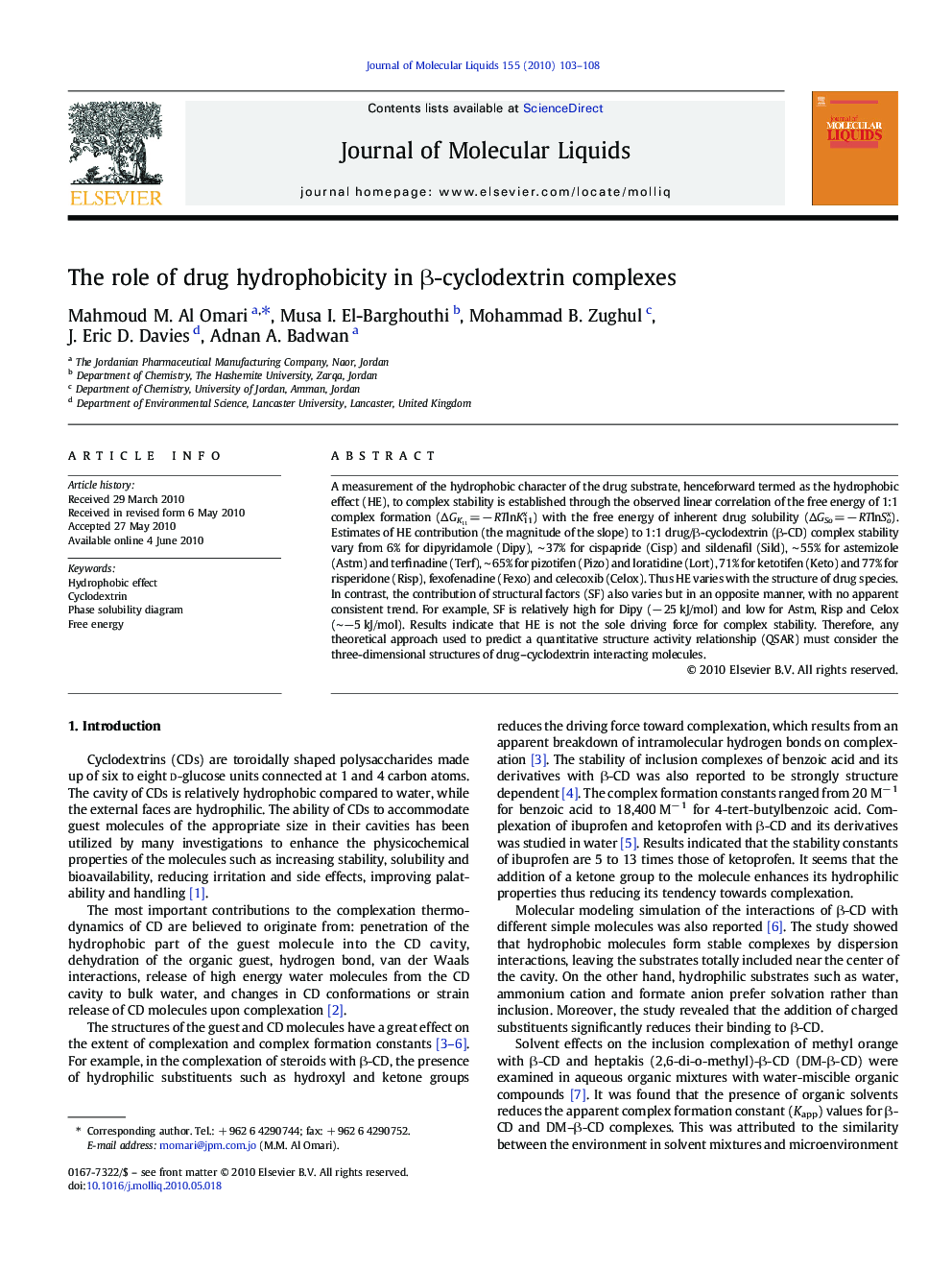| Article ID | Journal | Published Year | Pages | File Type |
|---|---|---|---|---|
| 5412984 | Journal of Molecular Liquids | 2010 | 6 Pages |
Abstract
A measurement of the hydrophobic character of the drug substrate, henceforward termed as the hydrophobic effect (HE), to complex stability is established through the observed linear correlation of the free energy of 1:1 complex formation (âGK11 = â RTlnK11x) with the free energy of inherent drug solubility (ÎGSo = â RTlnSox). Estimates of HE contribution (the magnitude of the slope) to 1:1 drug/β-cyclodextrin (β-CD) complex stability vary from 6% for dipyridamole (Dipy), â¼Â 37% for cispapride (Cisp) and sildenafil (Sild), â¼Â 55% for astemizole (Astm) and terfinadine (Terf), â¼Â 65% for pizotifen (Pizo) and loratidine (Lort), 71% for ketotifen (Keto) and 77% for risperidone (Risp), fexofenadine (Fexo) and celecoxib (Celox). Thus HE varies with the structure of drug species. In contrast, the contribution of structural factors (SF) also varies but in an opposite manner, with no apparent consistent trend. For example, SF is relatively high for Dipy (â 25 kJ/mol) and low for Astm, Risp and Celox (â¼â5 kJ/mol). Results indicate that HE is not the sole driving force for complex stability. Therefore, any theoretical approach used to predict a quantitative structure activity relationship (QSAR) must consider the three-dimensional structures of drug-cyclodextrin interacting molecules.
Related Topics
Physical Sciences and Engineering
Chemistry
Physical and Theoretical Chemistry
Authors
Mahmoud M. Al Omari, Musa I. El-Barghouthi, Mohammad B. Zughul, J. Eric D. Davies, Adnan A. Badwan,
